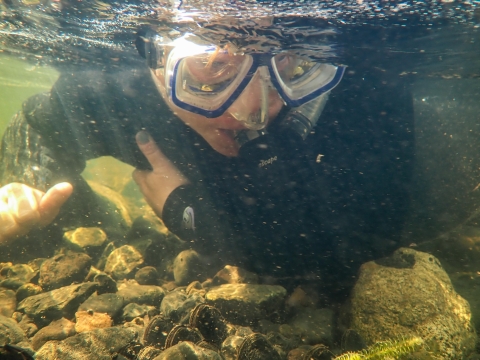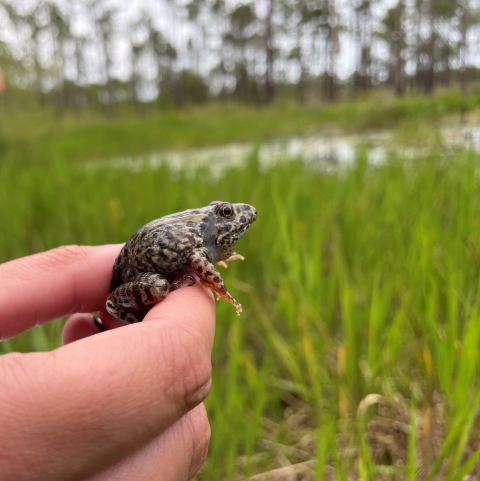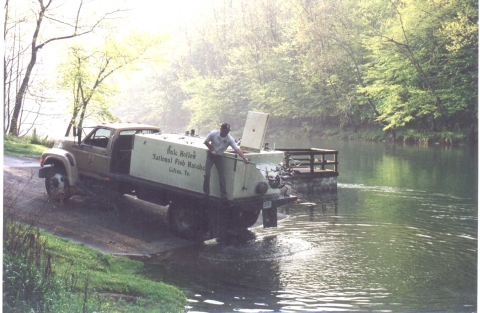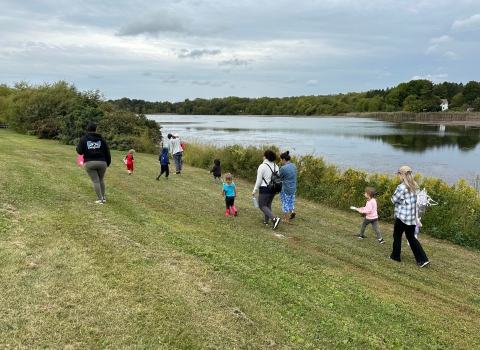What is a fish hatchery?
A fish hatchery breeds and raises fish or other aquatic animals (like mussels) in a controlled and captive setting. Hatcheries can be a unique and powerful tool for wildlife conservation when they are used to recover wild populations and support sustainable recreational fisheries. Hatcheries and aquaculture also play an important role in producing healthy and affordable food.
Fish hatcheries and aquaculture facilities can be run by states, Tribes, or even private individuals or commercial enterprises. But the National Fish Hatchery System is unique. It is the only national aquaculture program dedicated entirely to the conservation of aquatic species. The National Fish Hatchery System was created in 1872 to raise food fish for commercial fisheries and feed families. Over the years, the system has evolved to meet the changing needs of conservation. Some national fish hatcheries still raise fish for food and to support recreational fishing, but many are now focused only on conserving at risk, threatened, or endangered species.
The National Fish Hatchery System supports aquatic conservation.
The world’s rivers and lakes were once full of diverse communities of fish, invertebrates, and plants. Now, these aquatic wildlife are now some of the most imperiled in the world because of habitat loss and fragmentation, invasive species invasive species
An invasive species is any plant or animal that has spread or been introduced into a new area where they are, or could, cause harm to the environment, economy, or human, animal, or plant health. Their unwelcome presence can destroy ecosystems and cost millions of dollars.
Learn more about invasive species , and climate change climate change
Climate change includes both global warming driven by human-induced emissions of greenhouse gases and the resulting large-scale shifts in weather patterns. Though there have been previous periods of climatic change, since the mid-20th century humans have had an unprecedented impact on Earth's climate system and caused change on a global scale.
Learn more about climate change . National fish hatcheries can help by raising aquatic wildlife that are at-at risk, threatened or endangered, improving recreational fishing, and supporting fisheries that have been impacted by a federal dam.
National fish hatcheries raise fish and other aquatic wildlife that are threatened or endangered.
Hatcheries are an important part of the U.S. Fish and Wildlife’s mission to conserve, protect, and enhance, fish, wildlife, plants, and their habitats. National fish hatcheries use aquaculture to raise threatened, endangered, or at-risk species in a safe captive environment for eventual release into a natural setting, or to protect their genetics. This work, along with habitat restoration, and other federal protections, can help boost and support wild populations. Hatcheries also raise species that are at-risk to help ensure they do not become endangered.
National fish hatcheries raise fish to support fisheries that have been impacted by federal dams.
While dams are an important part of our national infrastructure, they can also disrupt the natural movement and reproduction of fish and other aquatic animals. Many fish that are raised in national fish hatcheries support fisheries that have been disrupted by federal dams. Where dams are necessary, the National Fish Hatchery System helps ensure a future for impacted fisheries through safe and responsible propagation.
Boosting Salmon in the Columbia.
An adult Pacific lamprey is ready for release.
National fish hatcheries support recreational, subsistence, and commercial fishing.
Participation in outdoor activities like hiking, hunting, fishing, and wildlife watching connect people with nature and empower the next generation of conservationists. Fishing is more than a hobby. For many, it represents a way of life and a sustainable way to feed communities. Through fishing, people can connect with nature and the world around them.
Many states rely on aquaculture to stock lakes and rivers with fish populations for sustainable recreational fishing. The National Fish Hatchery System works closely with our state and Tribal partners to produce and stock fish using advanced genetic tools and techniques to maximize performance and to minimize negative impact on wild fish. The National Fish Hatchery System is dedicated to ensuring healthy sustainable fisheries for future generations.
The National Fish Hatchery System uses applied science to support conservation.
The National Fish Hatchery System operates 13 applied science facilities that assist our fish production programs by advancing the fields of genetics, physiology, pathology, and nutrition. Our Fish Health and Technology Centers play a leading role in guiding the science and technology that is foundational to responsible conservation-based aquaculture. They assist with the recovery of endangered, threatened, and declining populations of fish and other aquatic species, prevent the spread of aquatic invasive species, and improve fish culture technology and culture protocols. Our applied research helps state, Tribal, and private aquaculture facilities prevent the spread of aquatic viruses and keep both wild and hatchery fish healthy.









